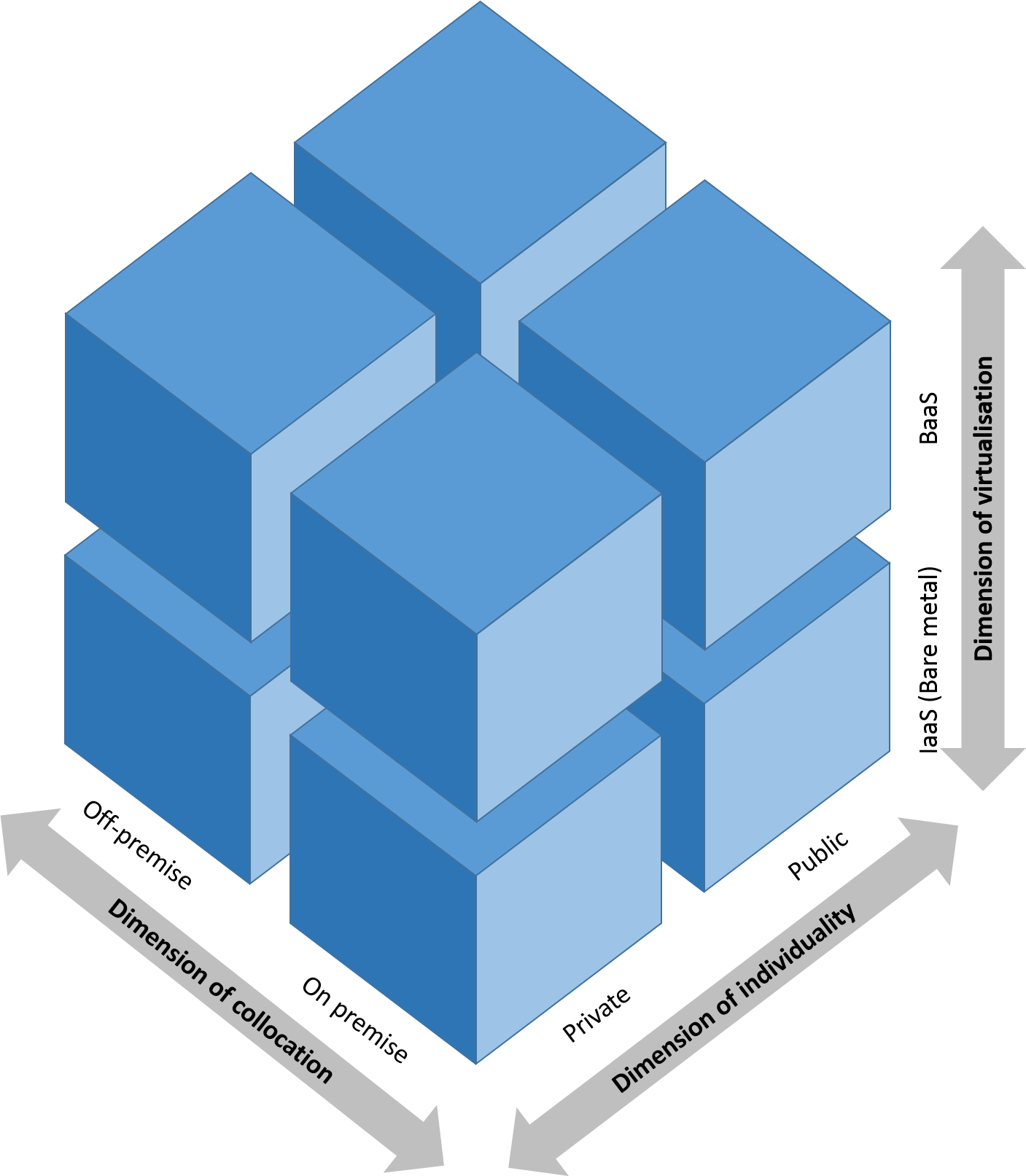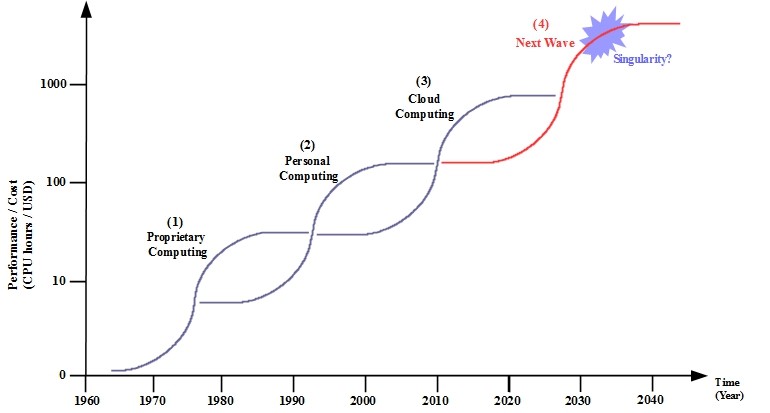Cloud revised and from Cloud to Singularity
| As published in the liber amicorum of Prof. dr. H. Jaap van den Herik, Tilburg University, 29 Jan 2016 | |
|
The path of continuous innovative ICT research by Jaap van den Herik and my path of remaining ambition to start a Ph.D. crossed in Rotterdam, back in 2008. Since that initial discussion I have the honour to work on my Ph.D. under the supervision of Jaap van den Herik for a period of almost four years. The research subject of Cloud Computing was new at that point in time. Now, four years later, the landscape has changed already. The pace of innovation and change in information technology is high, therefore I like to amend our initial findings with the following two conclusions: (1) Cloud revised and (2) Cloud to Singularity. |
|
1. Cloud revised Cloud computing is interpreted in many ways. Bogaert (2011) build a structure based on two dimensions; these were (1) the dimension of collocation and (2) the dimension of virtualisation. Today, we should extend these two dimensions as follows: For the first dimension of collocation we need to rethink the dimension. In the past the extreme level ‘internal’ equaled ‘on premise private’ and the extreme level ‘external’ equaled ‘off-premise public’. Today we have to loosen these cohesions. We can therefore split the dimension of collocation into two new dimensions. (1) The dimension of collocation with the extreme levels of collocation: (a) on premise vs. (b) off-premise. (2) The new dimension of individuality with the extreme levels of individuality, (a) private vs. (b) public. Combing the extreme levels of the dimension of collocation and the extreme levels of dimension of individuality using a two dimension graph results in four quadrants. We show the idea in Figure 1.
Figure 1. Dimension of collocation and dimension of individuality
For the second dimension of virtualisation we observe two major trends in the market. (1) The level of virtualisation is extended downwards within the infrastructure using new technologies such as software defined infrastructure, software defined storage, and software defined networks. This results in the ability to create and configure infrastructure by software, consequently new offerings called bare metal servers are available as a cloud service in the market. (2) The level of virtualisation is deepened at the level of Platform as a Service. Where in the past the Platform as a Service was provided as a single service, now the platforms become platforms of aggregated services. These platforms aggregate services from different vendors. We have defined now three dimensions: (1) the dimension of virtualisation, (2) the dimension of collocation, and (3) the dimension of individuality. These three dimensions are used as axes in a three dimensional graph. We show the idea in the figure 2.
Figure 2. Dimension of collocation, dimension of individuality, and dimension of virtualisation We depict the extreme levels for each dimension, resulting in eight octants. When we examine the industry along these three dimensions, we are able to define eight operational scenarios in cloud computing according to the eight octants.
|
|
|
2. Cloud to Singularity Cloud might seems the future, as the world is moving rapidly to these technologies. However, it is only an intermediate step to the next wave of technologies. Let us take a closer look on what could be the future beyond today’s promising technology of cloud. Cloud Computing is a delivery model of technology where the use of information technology is provided over the internet. This enables users to access technology-enabled services from the internet (‘in the cloud’) without knowledge of, expertise about, or control over the technology that supports them. We defined three waves of computing which introduced the third wave as cloud computing (Bogaert, 2011). Cloud computing is the third wave of computing, characterised by two developments: (1) consolidation of technology and (2) sharing of resources among different users/applications on the same platform. This results in less infrastructure, software, and consequently in lower operational costs. The industrialised delivery model of cloud turns technologies into a commodity. If we look to the graph I used before, you might ask yourself if cloud computing is going to be the ultimate and final delivery model of information technology. Or, what is the next shift in technology that is going to trigger a new wave with associated superior increase in performance versus costs? We extended the previous graph and show the idea in Figure 3.
Figure 3. The fourth wave of computing Mobile technologies leverage the omnipresence of the internet together with access to information and services in the cloud. The growth of wireless access to the internet combined with the growth of available information and services is boosting the development of mobile technologies. Also here, what’s next? While cloud and mobile are still growing, the key questions already are: what is the future after cloud and mobile have become mature? Which innovations will drive the next wave of information technology? Being home for a year caused by a scattered leg gave me enough time to think about this kind of ‘philosophic’ questions. I came up with four drivers with an impact on the way we will cope with information technology in the near future. These four drivers are (1) consolidation, (2) data and service unification, (3) integration between the human being and the technology, and (4) cognitive capabilities of computer systems. Let me explain these four drivers.
The next shift in technology is coming, and the above four drivers (among others) will likely impact this shift and bring us to the next wave of technology with an impact of on the technology landscape and a better cost versus performance ratio. This might also bring us closer to the technology singularity. Kurzweil predicted the singularity to occur around 2045 and Vinge predicted it for some time before 2030, so our next shift in technology will most probably bring us very close to this point. |
|
|
Still lots of innovative ICT research is required, but let’s think positive and look forward to the exciting times ahead! Dear Jaap, it was a tremendous honour to work under your supervision. Working with you was an incredible once in lifetime learning experience. I will always remember your continuous drive for perfection, your curiosity for the details, and your attention for consistency. Thank you very much! I wish you all the best for the next episode in your personal life, and as all good things come in threes: (1) wish every day your life may be filled with love, (2) wish you a continuous good health, (3) and wish you everyday happiness! |
- bogaert's blog
- Log in to post comments



